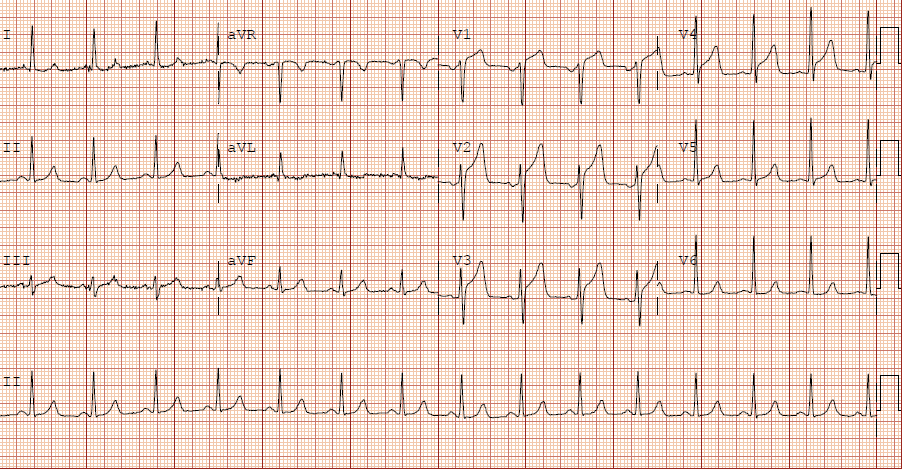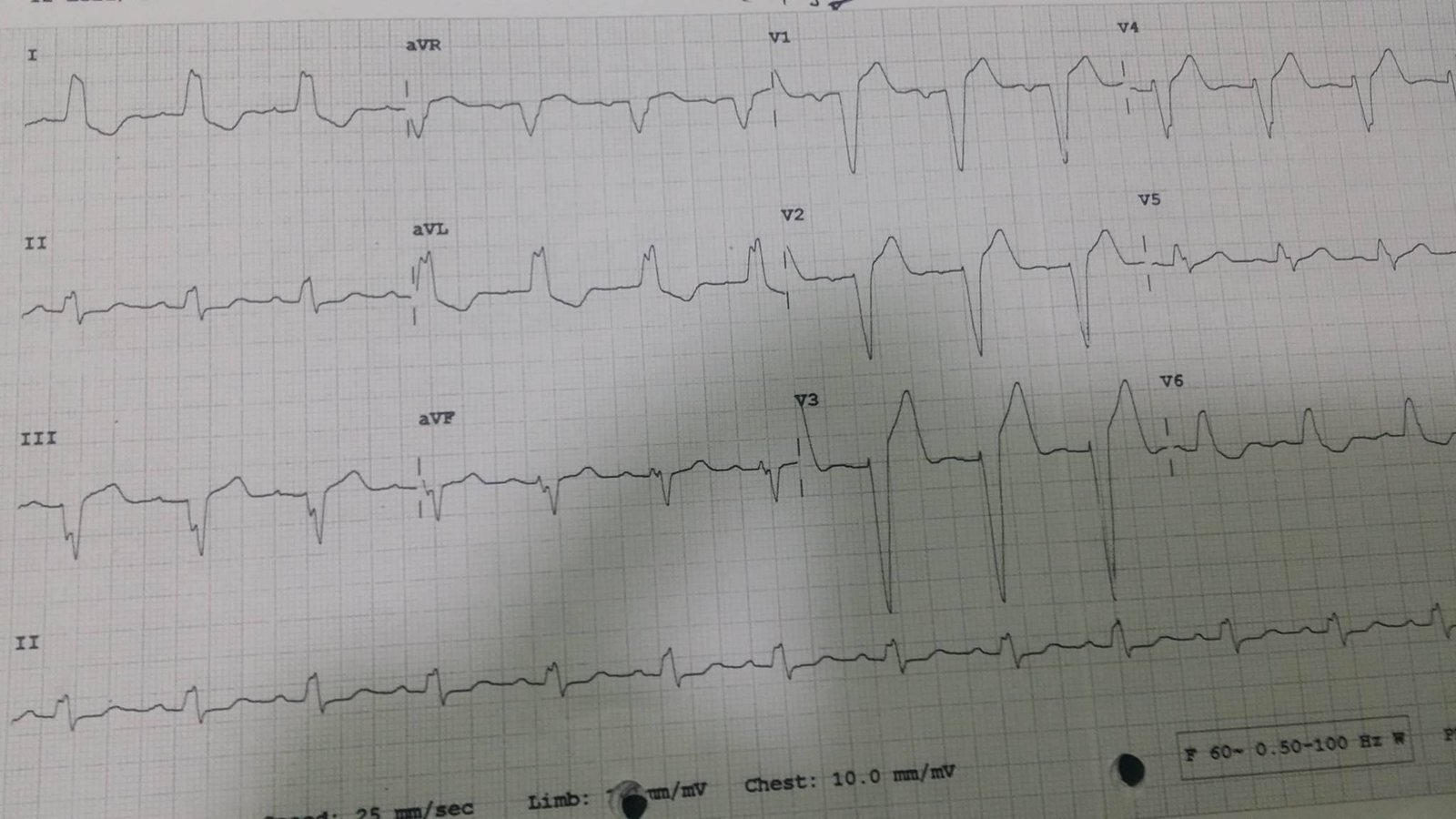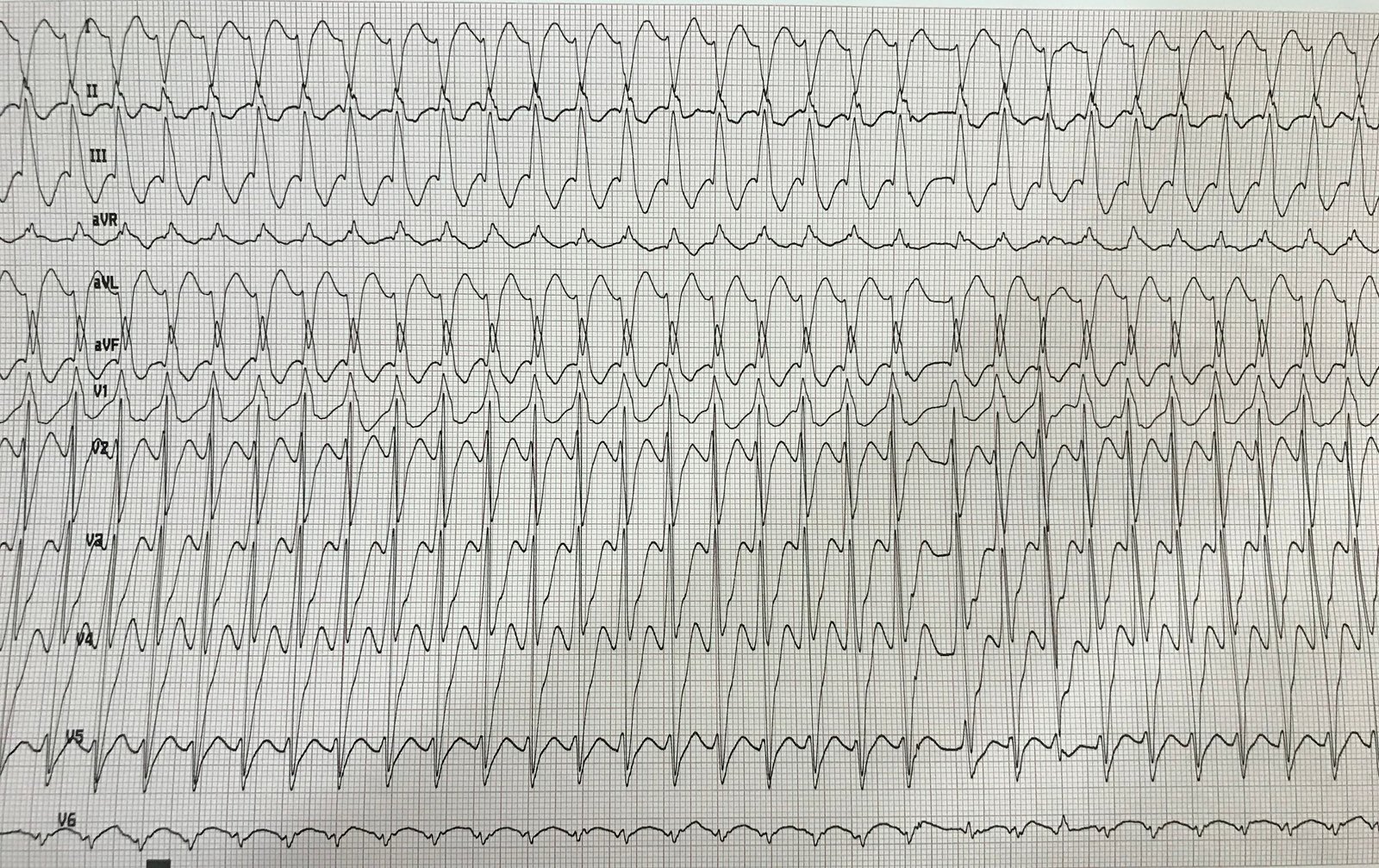A middle-aged male presented with acute chest pain:
Here is the ECG of another middle-aged male with acute chest pain:
 |
| It is similar, but notice how the T-waves are not nearly as proportionately large as in the above ECG.
What do you think? |
The bottom ECG is that patient’s baseline LVH.
The top ECG is LVH with superimposed inferior acute MI. The T-waves (both upright and negative ones) are far too large in proportion to the QRS. There is also a concordant T-wave in lead II, and ischemic appearing biphasic T-waves in V4-V6, with a flattened ST segment in V3, all suggesting posterior and lateral involvement.
Notice also the ischemic biphasic T-waves in V4 and V5.
Technically, it is not “STEMI” because the ST elevation at the J-point is less than 1 mm.
But it is an OMI!!
This (top) ECG was missed by several interpreters and the patient had very delayed reperfusion therapy.
The culprit was 100 % thrombotic occlusion of the mid RCA. The peak troponin I was 47 ng/ml (very high). There was a regional wall motion abnormality in the inferior and posterior walls. The LAD was not involved.
The patient was discharged with a diagnosis of NonSTEMI.
There actually was a previous ECG for comparison, which proves the point. Here it is:
 |
| Very different from LVH with superimposed inferior STEMI. |
Here is the post-PCI ECG:
 |
| Notice inferior reperfusion (inverted) T-waves Notice precordial large T-waves (posterior reperfusion T-waves) Notice lateral reperfusion T-waves. These are “Wellens’ waves” of inferior, posterior, and lateral walls. |
Learning point
Know the T-wave to QRS proportions in LVH vs. LVH with superimposed MI.





Dear Dr. Smith in the basal old ecg,is not atypical to see strain pattern with st elevation of the j point in right precordial leads(v1-v3) without clearly signs of strain pattern with hockey sign in lateral precordial leads? Thank you
Relation between QRS & T wave in II,III, AVF , tall ,positive so called hyper acute T wave ,very much suggestive of earliest stages of ischemia , before ST elevation.
Serial ECGs, changing ECGs with ischemia,LVH shouldn't change unless also ischemia
Great case! The ST-T waves in leads I, aVL in the 1st (Top) tracing look potentially consistent with secondary ST-T wave abnormalities in this patient with obvious LVH (R wave in lead aVL ~20mm). In contrast, the ST-T waves in the chest leads for this 1st (Top) ECG look either due to ischemia (that may be acute) or a repolarization variant. But it would be rare to see this type of chest lead ST-T wave repolarization variant in a patient with seemingly “typical LV strain” changes in lead aVL — so something “isn’t right”. One look at the inferior lead should confirm this impression. The R wave in lead aVL is markedly taller than the S wave in lead III is deep. As a result, the amount of ST-T wave peaking in lead III (and in the other inferior leads) should be correspondingly less than the depth of ST-T depression in aVL. Instead, there is decidedly more relative inferior T wave peaking — with inferior T waves that are clearly broader (“fatter”)-than-they-should be. These are hyperacute T waves. Putting this all together in a patient with new chest pain — and the onus falls on us to rule out an acute event. Finding a baseline tracing (2nd ECG shown) then confirms this impression by documenting that we are indeed seeing acute ECG changes.
P.S. I wonder why there is such dramatic change in chest lead QRS amplitude between the first 2 tracings in this patient with acute RCA occlusion but no anterior infarction … ?
THANKS again Steve for posting this highly insightful case!
It is less common for sure, but is not necessary to have the "hockey" sign.